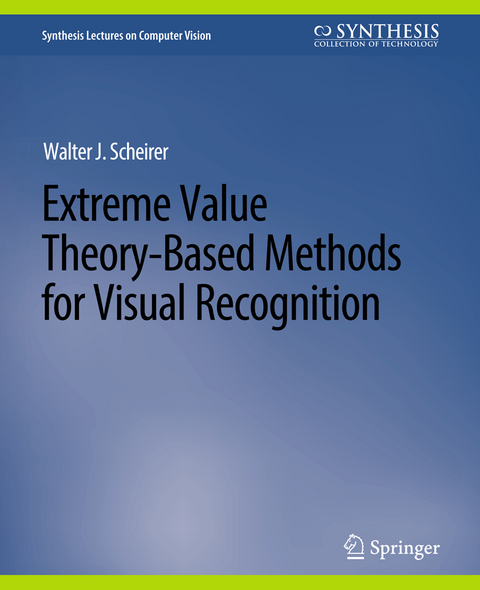
Extreme Value Theory-Based Methods for Visual Recognition
Springer International Publishing (Verlag)
978-3-031-00689-0 (ISBN)
Walter J. Scheirer is an Assistant Professor in the Department of Computer Science and Engineering at the University of Notre Dame. Previously, he was a postdoctoral fellow at Harvard University, with affiliations in the School of Engineering and Applied Sciences, Department of Molecular and Cellular Biology and Center for Brain Science, and the director of research & development at Securics, Inc., an early-stage company producing innovative computer vision-based solutions. He received his Ph.D. from the University of Colorado and his M.S. and B.A. degrees from Lehigh University. Dr. Scheirer has extensive experience in the areas of computer vision and human biometrics, with an emphasis on advanced learning techniques. His overarching research interest is the fundamental problem of recognition, including the representations and algorithms supporting solutions to it.
Preface.- Acknowledgments.- Figure Credits.- Extrema and Visual Recognition.- A Brief Introduction to Statistical Extreme Value Theory.- Post-recognition Score Analysis.- Recognition Score Normalization.- Calibration of Supervised Machine Learning Algorithms.- Summary and Future Directions.- Bibliography.- Author's Biography.
| Erscheinungsdatum | 06.06.2022 |
|---|---|
| Reihe/Serie | Synthesis Lectures on Computer Vision |
| Zusatzinfo | XV, 115 p. |
| Verlagsort | Cham |
| Sprache | englisch |
| Maße | 191 x 235 mm |
| Gewicht | 264 g |
| Themenwelt | Informatik ► Grafik / Design ► Digitale Bildverarbeitung |
| Informatik ► Theorie / Studium ► Künstliche Intelligenz / Robotik | |
| ISBN-10 | 3-031-00689-5 / 3031006895 |
| ISBN-13 | 978-3-031-00689-0 / 9783031006890 |
| Zustand | Neuware |
| Haben Sie eine Frage zum Produkt? |
aus dem Bereich


